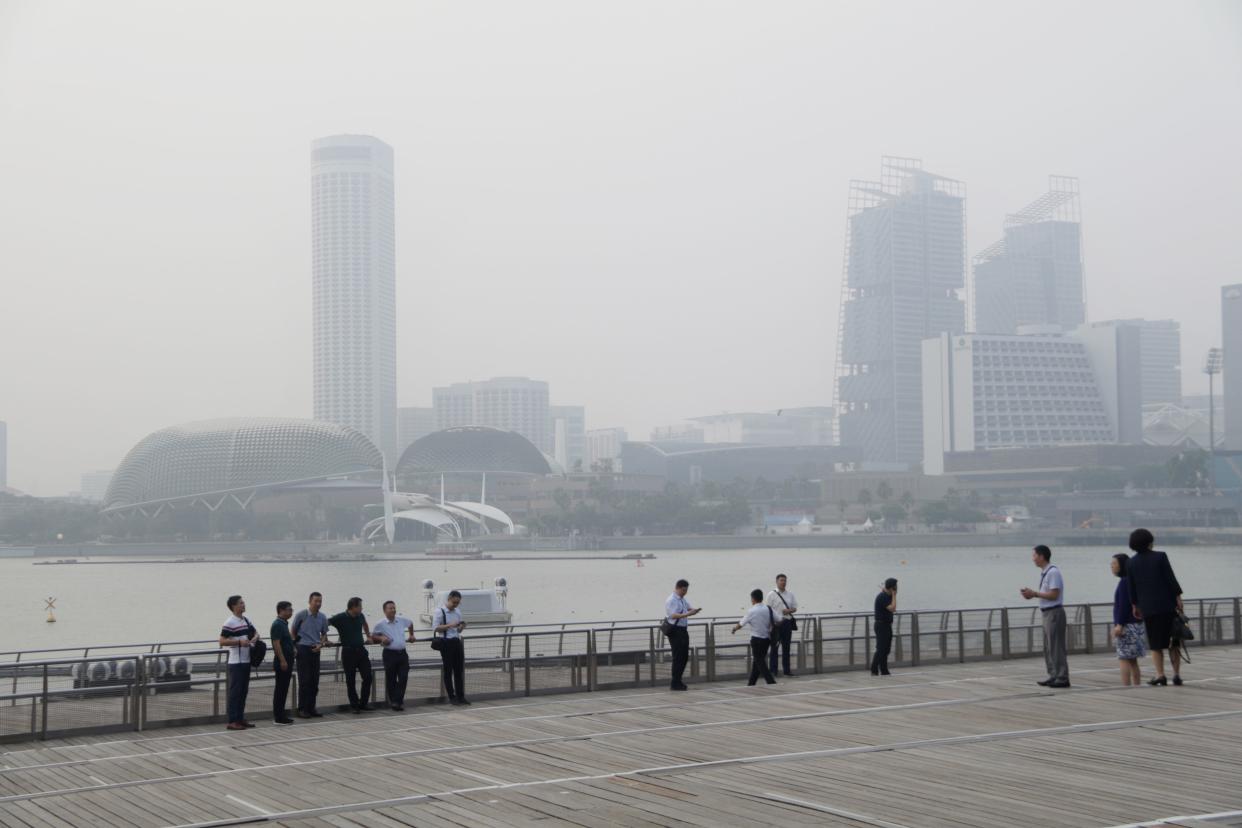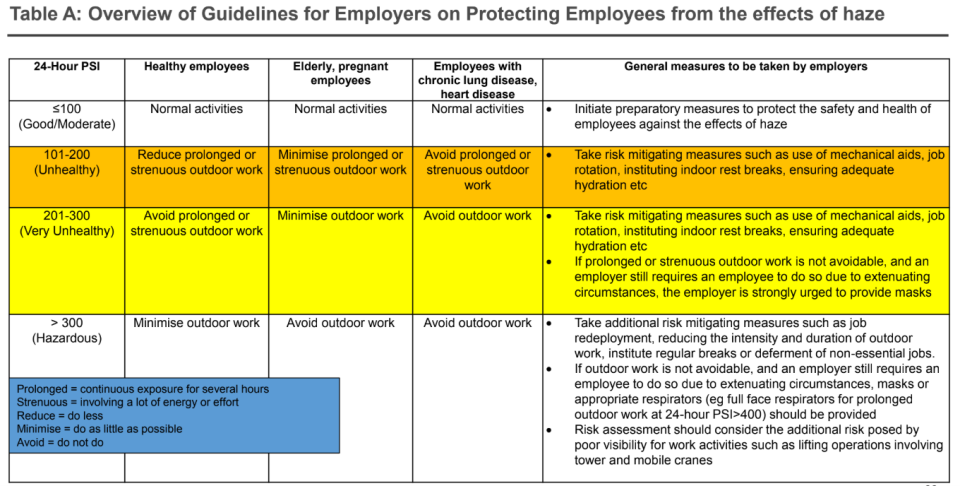F1 weekend: Haze levels will range between moderate and unhealthy

UPDATE: As of 2pm on 22 September (Sunday), islandwide PSI levels range from 101 to 116 (unhealthy). The hourly PM2.5 concentration readings range from 75 to 110 (elevated).
SINGAPORE — Authorities say that haze levels are expected to remain between the high end of the Moderate range and the low end of the Unhealthy range over the weekend, when the Formula One races take place at Marina Bay.
For the moderate range, the 24-hour Pollutants Standard Index (PSI) reading is from 51 to 100. If the PSI is between 101 and 200, the haze level is in the Unhealthy range.
Haze conditions entered the Unhealthy range twice in the past week, and PSI levels reached as high as 154 on early Thursday morning.
As of 2pm on Friday (20 September), the PSI reading ranged between 60-63 islandwide, according to the National Environment Agency’s (NEA) haze microsite. The one-hour PM2.5 concentration reading – which indicates the amount of particulate matter in the air – was between 26 and 36, in the normal range.
Conditions could improve early next week
During a technical briefing on the haze by the National Environment Agency (NEA) and the Ministry of Health (MOH) on Friday, a spokesperson from the Meteorological Service Singapore said that the current haze conditions are unlikely to change in the upcoming days.
This is because dry weather is expected to persist in the southern parts of Indonesia’s Sumatra island – the origin point of most of the haze the Republic is experiencing.
If the wind direction blows towards Singapore during the weekend, then the Formula One races will likely take place under hazy night conditions.
However, conditions could improve early next week, as showers are forecast in southern Sumatra at the end of the month, providing some respite to the haze.

When is it appropriate to use N95 masks?
NEA and MOH also assured that there are sufficient stocks of N95 masks in the warehouse and government stockpiles, with as many as 16 million masks that can be released to the market when required.
A spokesperson from MOH’s Epidemiology and Disease Control Division also clarified on when it is necessary to use the masks:
The masks are not required for indoor environment or short exposure to outdoors, such as commuting from home to school or work.
For healthy individuals, they need to use the masks only when they have to be outdoors for several hours when the PSI exceeds 300 (in the Hazardous range).
Vulnerable persons (pregnant women, children, elderly people, those with chronic lung or heart diseases), should use the masks when they have to be outdoors for several hours when the PSI exceeds 200 (in the Very Unhealthy range).
Those who experience difficulty breathing at rest or exertion should consult a doctor on whether they can use the N95 mask, as the mask restricts normal flow of air.
Why NEA uses its PSI index
The NEA also cleared up some misconceptions on how it tabulates the PSI during the briefing, as some had claimed official figures downplay the severity of the haze situation.
Some have turned to other air-quality readings, such as the World Air Quality Index (AQI), which is compiled by a non-profit organisation in Beijing and based on measurements provided by affected countries.
A spokesperson from NEA’s Pollution Control Department clarified that there are no international guidelines on how air quality indices should be computed, as countries adopt different index systems based on their local needs and circumstances.
This includes considerations such as how urban the setting is, and what the surrounding industries are like. Such considerations will form the baseline air quality, which means the air quality during periods with no haze.
As this baseline differs from city to city, no two air-quality indices are alike, the NEA spokesperson said.
A spokesman from the Ministry of Manpower also urged employers to prepare and assess measures to protect the safety and health of employees from effects of haze. Below is an overview of the guidelines in place:

Related stories:
Haze readings back at 'unhealthy' levels after two days of respite
Haze: What you can do to protect yourself
Singapore convenes Haze Task Force, sets out advisories to manage haze impact
Haze in 'unhealthy' range in Singapore for first time in over 3 years



